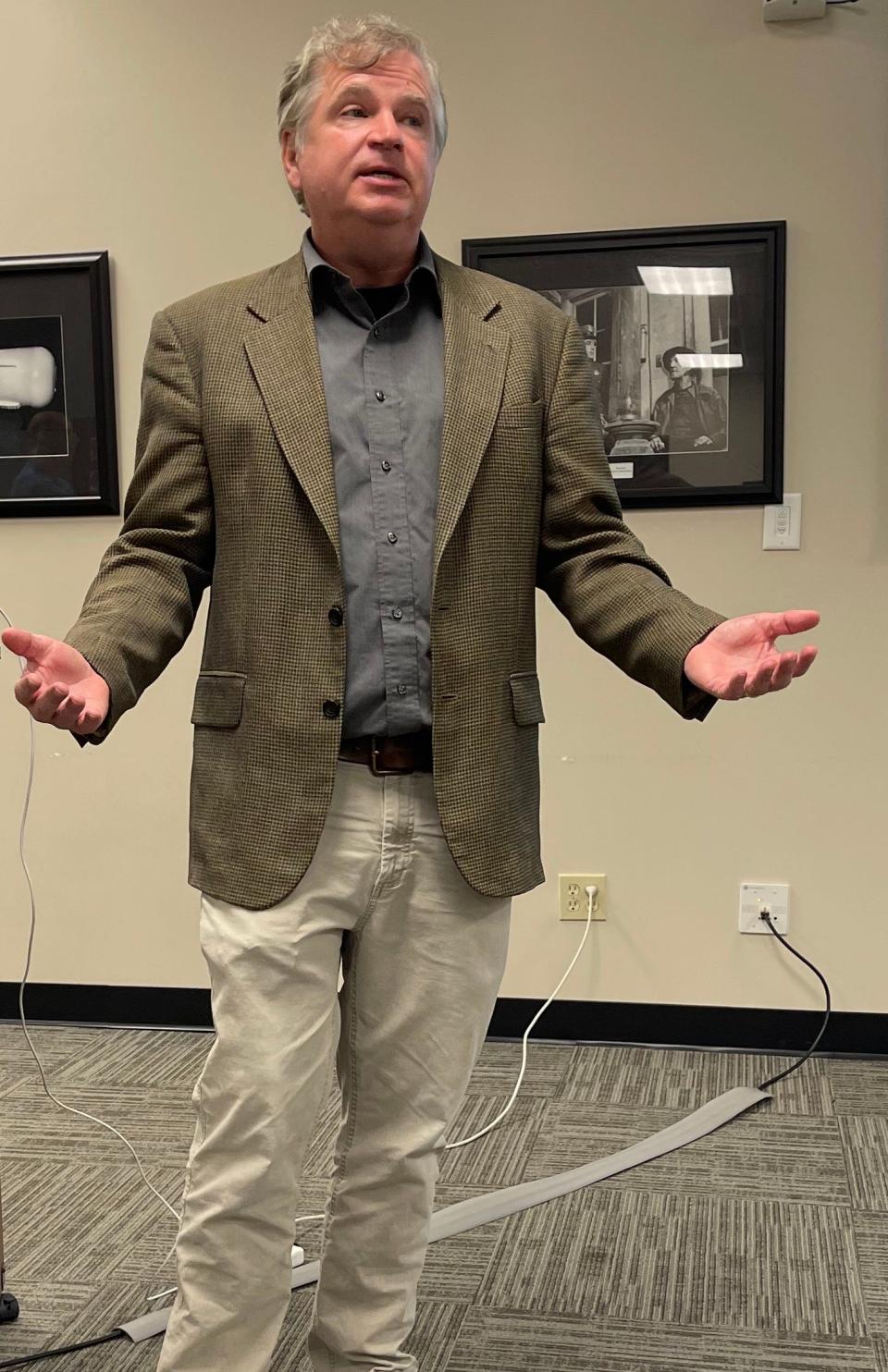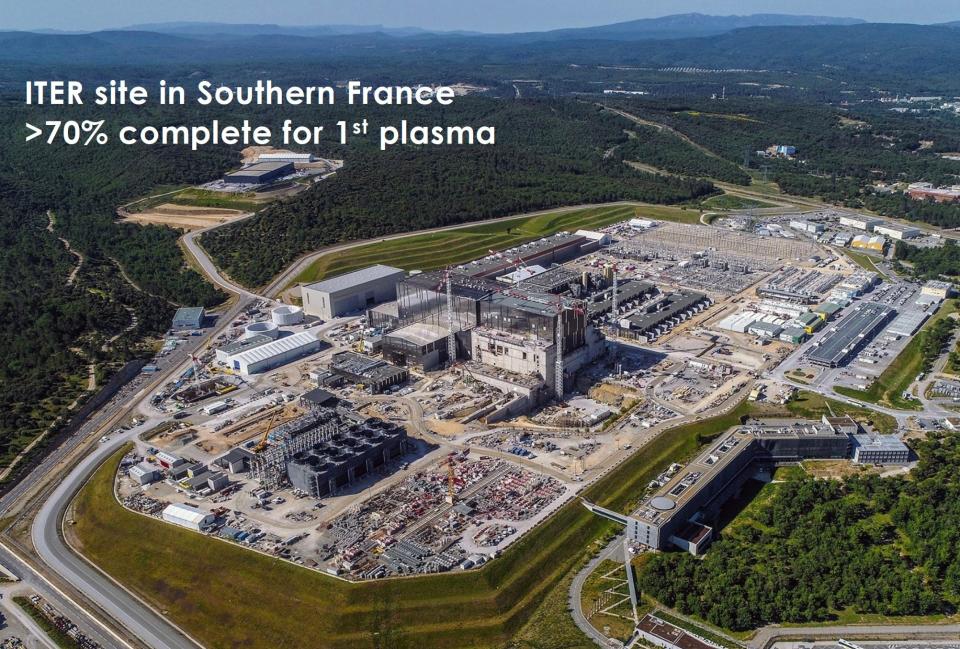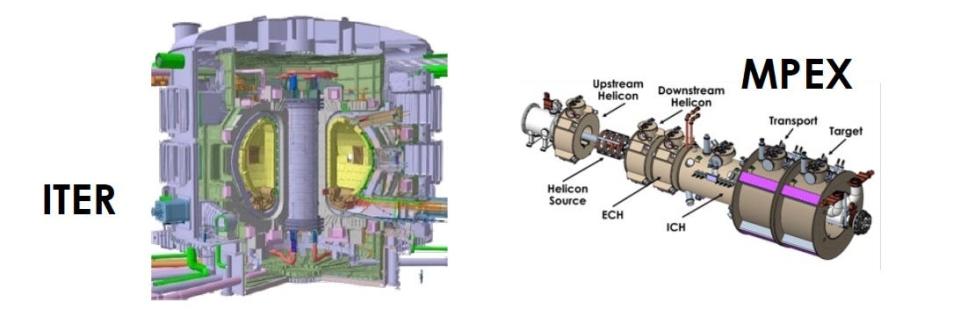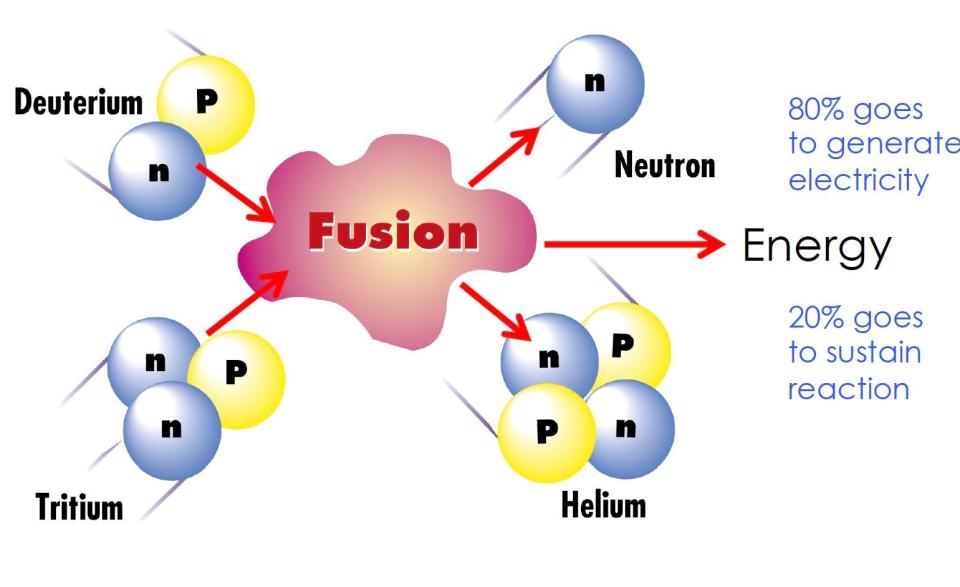Could a fusion electricity plant come here in the next decade?
Could we get a fusion pilot plant in the next decade that produces electricity using the hydrogen-like reactions that power our sun and all other stars?
A possible location for this facility that would never melt down, or release climate-altering greenhouse gases or produce highly radioactive waste: the Oak Ridge area.

It’s not just a dream or elusive vision, according to Philip B. Snyder, interim director of the Fusion Energy Division at Oak Ridge National Laboratory. In a recent talk to Friends of Oak Ridge National Laboratory (FORNL), Snyder said scientists have reasons to believe the world has entered “a very exciting new era for fusion energy development.”

One reason is the “rollout of the bold decadal vision at the White House about a year ago,” Snyder said. “The president’s proposed administration budget for fusion this year was over a billion dollars, the highest fusion budget in real dollars.”
He conceded that because of some issues in Congress, the U.S. fusion program might receive just a small increase over the current funding level.
Another reason for optimism about a fusion power plant in the next decade, Snyder added, is “the investment of $6 billion of private money in fusion companies, mostly fusion startups here in the United States.”
He noted that several groups of U.S. experts indicate readiness and urgency during the current climate crisis. He cited reports in 2018 and 2021 by the U.S. National Academies of Sciences, Engineering, and Medicine that stated that “now is the right time for the United States to take steps toward the development of fusion electricity for the nation's future energy needs” and that “successful operation of a pilot plant in the 2035 to 2040 time frame requires urgent investments by the Department of Energy and private industry – both to resolve the remaining technical and scientific issues and to design, construct and commission a pilot plant.”
In addition, Snyder said, “Extensive predictive tools for optimizing fusion performance now exist as do new technologies that can address key challenges.”
The JET tokamak in England and the laser fusion experiment on Dec. 5, 2022, at the National Ignition Facility at the U.S. Department of Energy's Lawrence Livermore National Laboratory have yielded favorable results, he said. They indicated that the two approaches – magnetic confinement and inertial confinement fusion (in which laser beams are focused on a fuel target) – briefly produced more energy from fusion reactions than was required to create them.
To achieve controlled fusion, a hot, charged state of matter composed of free electrons and atomic nuclei must be created. This plasma made of heavy hydrogen isotopes (deuterium and tritium) must be heated to over 100 million degrees, a temperature 10 times as hot as the sun’s core, and squeezed at an extreme pressure 1,000 times greater than that of the sun, mainly by superconducting magnets in magnetic confinement devices called tokamaks. The forces that normally repel hydrogen nuclei are overcome by the intense heating and compression of the plasma.
The heavy hydrogen nuclei combine to form helium atoms (fusion) and release high-energy neutrons that can be used to heat a coolant flowing through a blanket. The heated coolant, which might be helium, will drive a turbine to make electricity.
The lithium in the blanket can be converted by the neutron bombardments into tritium that can be used to fuel the plasma. A device called a divertor removes the helium.
Snyder told FORNL that less than four pounds of deuterium and tritium in a working fusion reactor could produce a gigawatt of electricity for one day to power 1 million homes or 2.5 million electric vehicles. That same power level would require enough coal to fill 80 train cars, 3 million solar panels or 400 wind turbines.
ORNL researchers have been involved in almost all aspects of tokamak development including heating, confining and refueling the plasma using the ORNL invention of injecting frozen pellets of deuterium-tritium.
Also, Oak Ridge hosts the office in charge of the $1.2 billion U.S. program helping to build ITER, an international tokamak experiment in France supported also by China, the European Union, India, Russia, Japan and South Korea. If all goes well, ITER could be demonstrating the ability to generate 10 times as much energy as it requires by the mid-2030s, paving the way for fusion power facilities.
ORNL is working with Princeton Plasma Physics and Savannah River National labs to deliver American in-kind components to ITER, including electrical systems, diagnostic instruments and systems for heating and refueling the fusion plasma. Snyder said the fourth module of the central solenoid, the “heartbeat” of ITER, has been completed and will soon be shipped.
A challenging aspect of creating a workable fusion power plant, Snyder said, “is finding or developing materials that can handle the extreme conditions in a fusion reactor.” These “plasma- facing” materials making up the containment vessel’s inner wall will be close to, or impinged by, potentially turbulent fusion plasmas.
“Testing materials under fusion neutron conditions is tricky,” he added, “because it requires neutrons that have energies much higher than the energies produced in existing nuclear power plants.”
At ORNL, the Materials Plasma Exposure Experiment (MPEX) now under construction is designed to test materials under fusion conditions. When it begins operation in 2028, MPEX will expose materials to a high intensity of neutron radiation and heating up to 10 megawatts per square meter. Snyder said that MPEX will give a sample of irradiated material or liquid metal the equivalent of lifetime exposure to fusion reactor conditions in only two weeks.
Snyder gave a detailed presentation on ORNL’s fusion research and development achievements and capabilities. He noted that the Fusion Energy Division he leads has grown to more than 100 staff.
“More than about a third of those have been hired within the last three years, including myself,” said Snyder, an ORNL corporate fellow.
He came to Oak Ridge from General Atomics in San Diego, which runs the experimental DIII-D tokamak. He has guided experiments on the “pedestal,” the fusion plasma edge that has the highest temperature, pressure and stored energy. He developed a predictive model of the edge transport barrier, or EPED, to predict and optimize the performance of fusion energy devices.
Snyder told the FORNL audience about ORNL’s fusion strategy for the 2020s, which includes identifying opportunities in the Oak Ridge region for siting a future power-producing fusion pilot plant.
“The area has the required water and electricity sources, ORNL has demonstrated the capability to host major projects involving national teams like the Spallation Neutron Source, we have strong regional partners including universities and utilities, and the state of Tennessee is rolling out its nuclear initiative,” Snyder said. “Our region is a potentially great place to do fusion power.”
The Oak Ridge strategy to help ensure successful operation of this envisioned facility, he said, is “to advance cutting-edge solutions through science, deliver technology test facilities like ITER and MPEX and enable private fusion companies’ aggressive timelines.”
The DOE Office of Fusion Energy Sciences this past year started the Milestone Program (“SpaceX for fusion” program), a $48 million program for private startup companies that can be reimbursed for half of their expenses if they reach a set of fusion milestones.
According to Snyder, ORNL is participating with six of the eight companies that received DOE awards: Commonwealth, Realta Fusion, Thea Energy, Tokamak Energy, Type One Energy (located in Oak Ridge) and Xcimer Energy Corporation. Most are working on magnetic fusion except for Xcimer, which is focused on inertial confinement fusion energy using lasers.
Don Batchelor, a retired theoretical physicist, told Snyder that compared with the many years he worked in the ORNL Fusion Energy Division, DOE and ORNL now have “a much more coherent program” for bringing together the science and technology and an approach “to what it will take to get to some real fusion power.”
Snyder replied that fusion researchers made the most advances when the U.S. government increased funding during the energy crisis in the late 1970s and early ’80s. But when the crunch faded, he added, “we hit a resource cliff as the government investment fell” and the level of funding was described as “fusion never,” a trajectory of the last 30 years that may end because of the climate crisis.


This article originally appeared on Knoxville News Sentinel: Oak Ridge pilot plant for fusion electricity possible in 2030s

